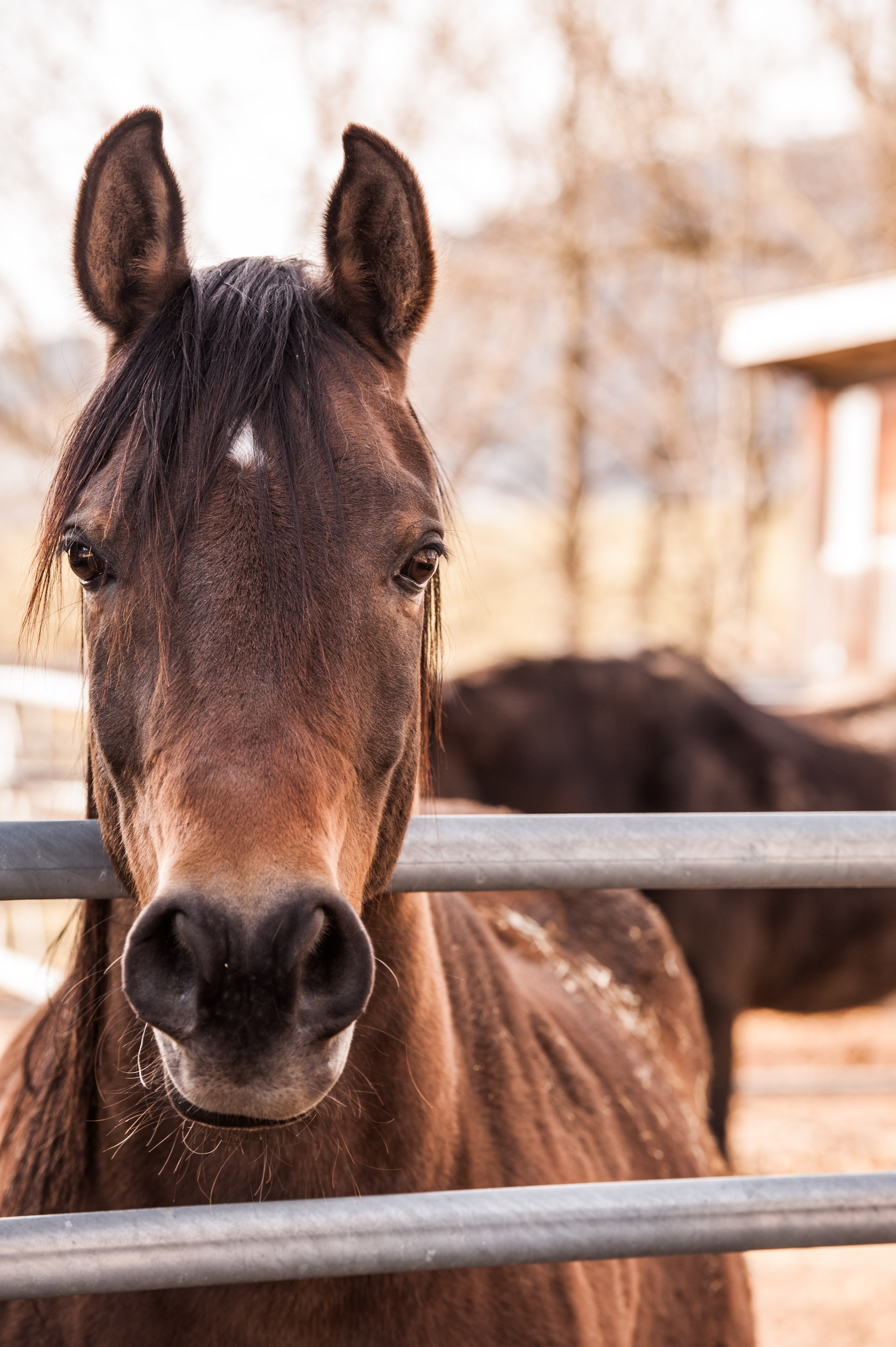Studies on the efficacy of pyrantel for the control of small strongyles in equines in central Argentina
DOI:
https://doi.org/10.14409/favecv.2023.22.e0024Keywords:
horses, cyathostomins, pyrantel, resistance, ArgentinaAbstract
The objective of this study was to investigate the prevalence of resistance to pyrantel pamoate in 11 horse farms (111 horses) from the central area of Argentina using the Fecal Egg Count Reduction Test (FECRT) and a hierarchical Bayesian model for data analysis. The same methodology was applied on week 4 post treatment to detect possible shortening in the ERP. The general efficacy of pyrantel was considered adequate in 9/11 farms, resistant in one and suspicious on other, and no changes were observed in the ERP. In the elimination of eggs before treatment (n= 127), 23.7 % of the animals were considered low eliminators, 32.5 % as moderate eliminators and 43.8 % as high eliminators, emphasizing the possibility of selectively treating the latter. Selective treatments would allow preserving the useful life of this drug, as well as that of the macrocyclic lactones, and represent a more rational alternative (compared to current mass treatments) for the sustainable control of small strongyles in adult horses. In the pre-treatment stool cultures, small strongyles were the parasitic group mostly observed but the presence of Strongylus vulgaris was discovered in three of the 11 farms studied, which warrants future research to determine the prevalence of this parasite of recognized pathogenicity. Key words: horses, cyathostomins, pyrantel, resistance, Argentina.
References
Anziani OS, Catanzaritti H. 2005. Resistencia a los benzimidazoles en nematodes de los equinos en Santa Fe, Argentina. Vet. Arg. 218: 571-578.
Anziani OS, Ardusso G 2017. Resistencia a los antihelmínticos en nematodes intestinales que parasitan a los equinos en la Argentina. INTA-RIA. 43: 24-35.
Anziani OS, Muchiut S, Cooper L, Cerutti J. 2016. Small strongyles (cyathostomes) and benzimidazoles. Persistance of status of resistance after nine years without the use of these drugs and efficacy of ivermectin about this parasite population. J. Equine Vet. Sci. 39: 52-55. DOI: 10.1016/j.jevs.2016.02.115
Becher AM, Mahling M, Nielsen MK, Pfister K. 2010. Selective anthelmintic therapy of horses in the Federal states of Bavaria (Germany) and Salzburg (Austria): an investigation into strongyle egg shedding consistency. Vet. Parasitol. 171:116-122. DOI: 10.1016/j.vetpar.2010.03.001
Boersema JH, Borgsteede FH, Eysker M, Saedt I. 1995. The reappearance of strongyle eggs in faeces of horses treated with pyrantel embonate. Vet. Q. 17: 18-20. DOI: 10.1080/01652176.1995.9694524
Boersema JH, Eysker M, Maas J, van Der Aar WM. 1996. Comparison of the reappearance of strongyle eggs on foals, yearlings and adult horses after treatment with ivermectin or pyrantel. Vet. Q. 18: 7-9. DOI: 10.1080/01652176.1996.9694602
Brady H & Nichols W. 2009. Drug resistance in equine parasites: an emerging global problem. J. Equine Vet. Sci. 29: 285-295. https://doi.org/10.1016/j.jevs.2009.04.186
Carroll CL & Huntington PJ. 1988. Body condition scoring and weight estimation of horses. Equine Vet. J. 20:41-45. DOI: 10.1111/j.2042-3306.1988.tb01451.x
Cerutti J, Cooper L, Caffe G, Cervilla N, Muchiut S, Anziani OS. 2012. Resistencia de los pequeños estrongilidos (grupo Cyathostomas) a los benzimidazoles en equinos del área central de la Argentina. Rev. InVet. 14: 41-46.
Cooper LG, Paz Benard BJ, Molinelli A, Caffe G, Fernandez Llanos I, Fassola LA, Cerutti J, Anziani OS. 2020. Eliminación de huevos de los pequeños estróngilos en la materia fecal de los equinos y su importancia práctica en la posibilidad de tratamientos selectivos. FAVE Sección Ciencias Veterinarias. 19: 1-6. DOI: 10.14409/favecv.v19i1.8977
Cooper LG, Paz Benard BJ, Nielsen MK, Molineri A, Anziani OS. 2021. A survey of helminth control practices on large horse farms in Argentina. Equine Vet. J. 53: 50-50. DOI:10.1111/evj.71_13495
Cooper LG, Paz Benard BJ, Caffe G, Fernández Llanos I, Anziani OS. 2023. Evaluaciones sobre la eficacia clínica de la ivermectina en el control de los pequeños estróngilos equinos (Cyathostoma spp). Status de susceptibilidad o resistencia en establecimientos del área central de la Argentina. FAVE Sección Ciencias Veterinarias. 22: 1-17. DOI: 0.14409/favecv.2023.22.e0012
Denwood MJ, Kaplan RM, McKendrick IJ, Thamsborg SM, Nielsen MK, Levecke B. 2023. A statistical framework for calculating prospective sample sizes and classifying efficacy results for faecal egg count reduction tests in ruminants, horses and swine. Vet. Parasitol. 314:1-12. DOI: 10.1016/j.vetpar.2022.109867
Döpfer D, Kerssens CM, Meijer YG, Boersema JH, Eysker M. 2004. Shedding consistency of strongyle-type eggs in Dutch boarding horses. Vet. Parasitol. 124: 249-258. DOI: 10.1016/j.vetpar.2004.06.028
Drudge JH, Lyons ET, Tolliver SC, Kubis JE. 1982. Pyrantel in horses: clinical trials with emphasis on a paste formulation and activity on benzimidazole-resistant small strongyles. Vet. Med. Small. Anim. CLIn. 77: 957-967.
Geurden T, De Keersmaecker F, De Keersmaecker S, Claerebout E, Leathwick DM, Nielsen MK, Sauermann CW. 2021. Three-year study to evaluate an anthelmintic treatment regimen with reduced treatment frequency in horses on two study sites in Belgium. Vet. Parasitol. 298:1-16. DOI: 10.1016/j.vetpar.2021.109538
Gokbulut C, McKellar QA. 2018. Anthelmintic drugs used in equine species. Vet. Parasitol. 261: 27-52. DOI: 10.1016/j.vetpar.2018.08.002
Kaplan RM, Denwood MJ, Nielsen MK, Thamsborg SM, Torgerson PR, Gilleard JS, Dobson RJ, Vercruysse J, Levecke B. 2023. World Association for the Advancement of Veterinary Parasitology (W.A.A.V.P.) guideline for diagnosing anthelmintic resistance using the faecal egg count reduction test in ruminants, horses and swine. Vet. Parasitol. 318:1-20. DOI: 10.1016/j.vetpar.2023.109936
Lichtenfels JR, Kharchenko VA, Dvojnos GM. 2008. Illustrated identification keys to strongylid parasites (strongylidae: Nematoda) of horses, zebras and asses (Equidae). Vet.Parasitol. 156:1-158. DOI: 10.1016/j.vetpar.2008.04.026
Losinno SJ, Aguilar J, Carbonetti L, Ferniot E, San Esteban F, Flores Suares CM. A survey on parasite control in sport horses of Argentina and other regional countries. 2018. Vet. Parasitol. Reg. Stud. Reports. 13:74-78. DOI: 10.1016/j.vprsr.2018.04.004
Lyons ET, Tolliver SC, Drudge JH, Stamper S, Swerczek TW, Granstrom DE. 1996. Critical test evaluation (1977-1992) of drug efficacy against endoparasites featuring benzimidazole-resistant small strongyles (population S) in Shetland ponies. Vet Parasitol. 66: 67-73. DOI: 10.1016/s0304-4017(96)00997-1
Macdonald SL, Abbas G, Ghafar A, Gauci CG, Bauquier J, El-Hage C, Tennent-Brown B, Wilkes EJA, Beasley A, Jacobson C, Cudmore L, Carrigan P, Hurley J, Beveridge I, Hughes KJ, Nielsen MK, Jabbar A. 2023. Egg reappearance periods of anthelmintics against equine cyathostomins: The state of play revisited. Int. J. Parasitol. Drugs Drug Resist. 21:28-39. DOI: 10.1016/j.ijpddr.2022.12.002
Nielsen MK, Haaning N, Olsen SN. 2006. Strongyle egg shedding consistency in horses on farms using selective therapy in Denmark. Vet. Parasitol. 135: 333-335. DOI: 10.1016/j.vetpar.2005.09.010
Nielsen MK. 2012. Sustainable equine parasite control: perspectives and research needs. Vet. Parasitol. 185: 32-44. DOI: 10.1016/j.vetpar.2011.10.012
Nielsen MK, Vidyashankar AN, Hanlon BM, Diao G, Petersen SL, Kaplan RM. 2013. Hierarchical model for evaluating pyrantel efficacy against strongyle parasites in horses. 2013. Vet. Parasitol. 197: 614-622. DOI: 10.1016/j.vetpar.2013.04.036
Nielsen MK, Pfister K, von Samson-Himmelstjerna G. 2014. Selective therapy in equine parasite control--application and limitations. Vet Parasitol. 202: 95-103. DOI: 10.1016/j.vetpar.2014.03.020
Nielsen MK. 2015. Universal challenges for parasite control: a perspective from equine parasitology. Trends Parasitol. 31: 282-284. DOI: 10.1016/j.pt.2015.04.013
Nielsen MK, Mittel L, Grice A, Erskine M, Graves E, Vaala W, Tully R, French D, Bowman R, Kaplan R. 2019. AAEP American Association of Equine Practitioners Parasite Control Guidelines. Online at www.aaep.org. Accesso 10 Mayo 2023.
Nielsen MK, von Samson-Himmelstjerna G, Kuzmina TA, van Doorn DCK, Meana A, Rehbein S, Elliott T, Reinemeyer CR. 2022. World Association for the Advancement of Veterinary Parasitology (WAAVP): Third edition of guideline for evaluating the efficacy of equine anthelmintics. Vet. Parasitol. 303:1-9. DOI: 10.1016/j.vetpar.2022.109676
Nielsen MK. 2022. Anthelmintic resistance in equine nematodes: Current status and emerging trends. Int. J. Parasitol. Drugs. Drug. Resist. 20:76-88. DOI: 10.1016/j.ijpddr.2022.10.005
Perdomo R, Cantón G, Fiel C. 2019. Evaluación de la resistencia antihelmíntica en equinos en un establecimiento de la Provincia de Buenos Aires. Universidad Nacional del Centro. 38 pp. Online: https://ridaa.unicen.edu.ar:8443/server/api/core/bitstreams/baaa5137-c345-41fb-98eb-5f74b9d92c23/content. Acceso 10 mayo 2023.
Peregrine AS, Molento MB, Kaplan RM, Nielsen MK. 2014. Anthelmintic resistance in important parasites of horses: does it really matter? Vet. Parasitol. 201: 1-8. DOI: 10.1016/j.vetpar.2014.01.004
Relf VE, Lester HE, Morgan ER, Hodgkinson JE, Matthews JB. 2014. Anthelmintic efficacy on UK Thoroughbred stud farms. Parasitol. Int. 44: 507-514. DOI: 10.1016/j.ijpara.2014.03.006
Russell AF. 1948. The development of helminthiasis in Thoroughbred foals. J. Comp. Path. Therap. 58: 107-127. DOI: 10.1016/s0368-1742(48)80009-3
Scott I, Bishop RM, Pomroy WE. 2015. Anthelmintic resistance in equine helminth parasites –a growing issue for horse owners and veterinarians in New Zealand? N.Z.Vet.J. 63: 188-198. DOI: 10.1080/00480169.2014.987840
Torgerson PR, Paul M, Furrer R. 2014. Evaluating faecal egg count reduction using a specifically designed package "eggCounts" in R and a user friendly web interface. Int. J. Parasitol. 44: 299-303. DOI: 10.1016/j.ijpara.2014.01.005
Vidyashankar AN, Hanlon BM, Kaplan RM. 2012. Statistical and biological considerations in evaluating drug efficacy in equine strongyle parasites using fecal egg count data. Vet. Parasitol. 185: 45-56. DOI: 10.1016/j.vetpar.2011.10.011
von Samson-Himmelstjerna G. 2012. Anthelmintic resistance in equine parasites-detection, potential clinical relevance and implications for control. Vet.Parasitol.185: 2-8. DOI: 10.1016/j.vetpar.2011.10.010
Wang C, Torgerson PR, Kaplan RM, George MM, Furrer R .2018. Modelling anthelmintic resistance by extending eggCounts pack-age to allow individual efcacy. Int. J. Parasit. Drugs Drug Resist. 8:386-393. DOI: 10.1016/j.ijpddr.2018.07.003

Published
How to Cite
Issue
Section
License
Copyright (c) 2023 Laura Gabriela Cooper, Benjamín José Paz Benard, Gabriel Caffe, Ignacio Fernández Llanos, Franco José Arroyo, Oscar Sergio Anziani

This work is licensed under a Creative Commons Attribution-NonCommercial-ShareAlike 4.0 International License.
FAVE Sección Ciencias Veterinarias ratifies the open access model, in which contents (in full) are available free to anyone in the internet. The costs of production and publication are not transfered to the authors. This policy intends to break social and economical barriers that generate inequities in the access to information, and for the publication of research results.
All articles can be accessed at http://bibliotecavirtual.unl.edu.ar/publicaciones/index.php/FAVEveterinaria/issue/current/, under license Creative CommonsAtribución-NoComercial-Compartir Igual 4.0 Internacional.










